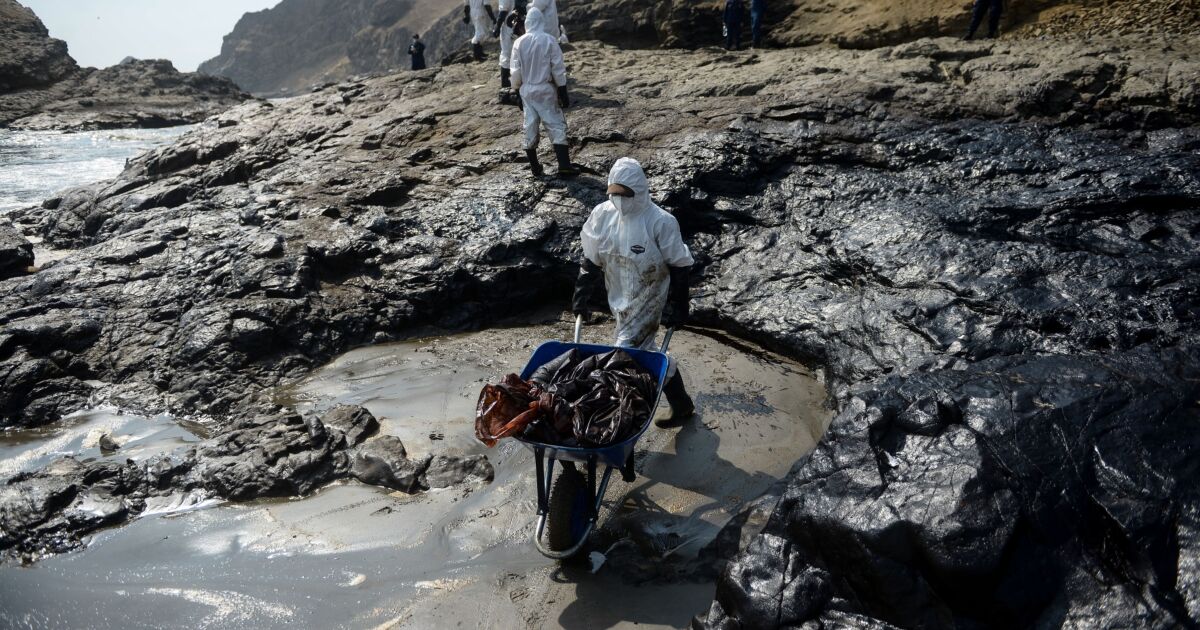How AI could be used in disaster preparedness, recovery

Imagine a hurricane has just devastated your town – and flattened your home.
Before you could even begin to consider rebuilding, you’d wait weeks – or even months – for a property assessor just to visit to take a look at the damage, let alone unlock the funds you need to get back on your feet.
But what if you could take pictures of the damage on the day of the hurricane, using your smartphone, and upload them – and when your insurer receives them, they deposit the funds into your bank account on the same day?
If this sounds like the future, it’s not – it’s happening now.
Real-world impact
In September 2021, we at Tractable launched our estimating technology for the home, in Japan. In peak season, Japan is often battered by devastating weather events – causing a big spike in property claims within a short period that can’t be assessed quickly or safely. But now, many of these claims can be evaluated and paid out very quickly – even in a single day.
What makes this possible is artificial intelligence. Breakthroughs in AI over the past decade mean we can now use it to train computer vision algorithms to perform visual tasks as accurately or more than humans. Smartphones can be turned into visual experts in your pocket, which can appraise some aspects of the environment better than people.
AI for good
When you apply AI to real events and go beyond proof to concept to create a robust and trustworthy platform, the results can be transformative for industries, people and the planet.
Most people’s direct experience of AI comes through everyday technologies such as virtual assistants on your phone like Alexa and Siri, automated investing, product recommendations on sites such as Amazon and many more.
Other experiences of AI tend to be indirect, such as advertising algorithms that are constantly optimizing the ads you are served. But one area where AI genuinely excels while also demonstrating tangible value as a force for good in our daily lives is analyzing images, just like a human would. For example, scanning medical images for evidence of disease, or pictures of cars to understand their condition.
Training products
Training an AI to carry out a task like this is complex, and the key to creating a solution that adds value is to train your algorithms on very large numbers of historical cases. With cars, you can teach your AI by using hundreds of millions of images, with input from expert humans to correct the algorithm when it needs to improve. Helped by most cars being similar, in time the AI learns to recognize what damage looks like, and when combined with other sources of data, it can estimate how much repairs will cost.
Homes provide a more complex challenge as they are less uniform, but with enough data, it’s still one that is solvable. In Japan, our insurance customers represent 90% of the car and property insurance markets. By working with them and by collecting, digitizing and pooling their historical claims, we have been able to produce a training dataset for our AI, helping it to understand the damage to houses, as well as cars.
AI applied to property and beyond
Insurance is just the beginning. If we can use your phone to scan your car, we can also use AI to help you protect it by telling you when, for instance, its tires need replacing or selling it by valuing it accurately via photos.
We can carry out similar tasks for the home too. If we know that your home is in an area that may be affected by wildfires, an AI could tell you, after analyzing photos, that you clear the nearby bushes that could act as tinder and set your fence ablaze. Or in damper areas, it could notice that your drains need some care and attention before you do.
Climate change will only make the preventative role of AI more valuable. According to a report from the Canadian Institute for Climate Choice, “As sea levels rise and rainfall increases, flood damage to homes and buildings could increase fivefold in the next few decades and by a factor of ten by the end of the century, with costs as high as $13.6 billion annually.”
This story is global: the 2020 California wildfires are estimated to have destroyed over $10 billion worth of property. Aside from climate-influenced disasters, there are uniquely natural ones. At the time of writing, we just witnessed devastating flooding in Tonga.
And what happens in the future? When we announced our Japanese launch, we sparked government interest, and now we’re having discussions about how we can target disaster relief more accurately. When wide-scale disasters hit, organizations like the Red Cross and United Nations deploy relief funds to people and businesses following manual damage appraisal – imagine how much this could be accelerated and scaled if the laborious groundwork could be carried out with AI, and a smartphone.
This blog entry has been excerpted with permission from Tractable.







